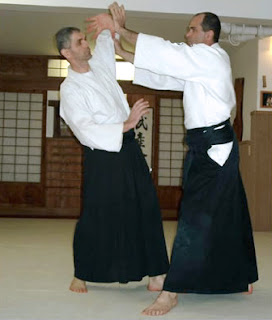Where is you mind?

It wasn't long ago that a critical aspect of different sections of junana hon kata , or randori no kata , finally dawned on me. I realized that, with the second section, or hiji waza , I was focusing on what I was doing to the arm or elbow, and with the third section, tekubi waza , I was focusing on what I was doing to the wrist. Which would seem natural since that's what their names mean: "elbow techniques" and "wrist techniques". The epiphany, however, came when I finally realized that I'm not doing something to the arm or the wrist, but rather I'm using the arm and wrist as a means of affecting uke's center line. The first section, or atemi waza , deals with going after the center line directly. From there, we move outward to using the arm to affect the center line, and then move even further out to using the wrist the same way. This realization has, in turn, affected my perspective of the rest of not only aikido, but judo as well.

